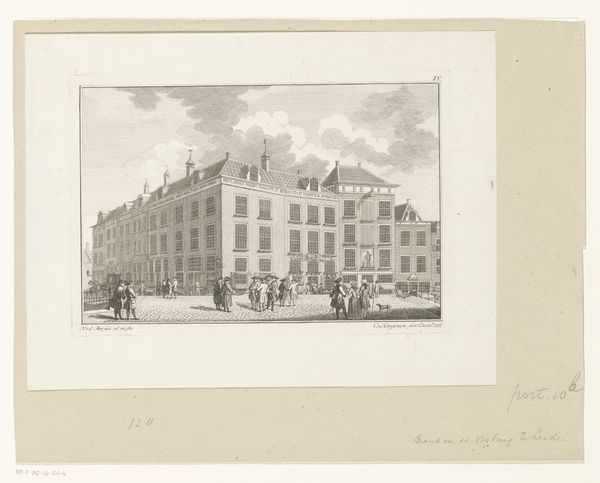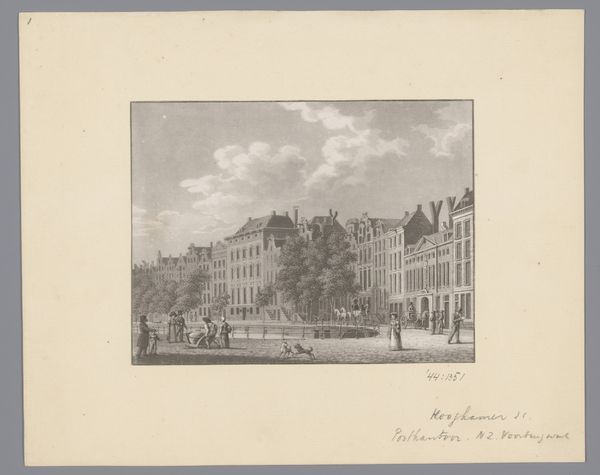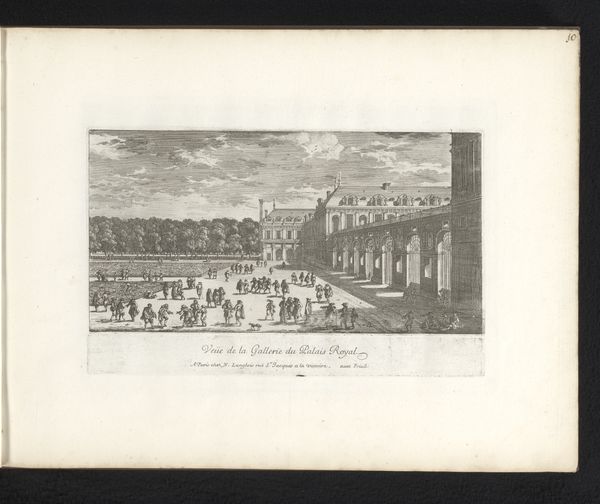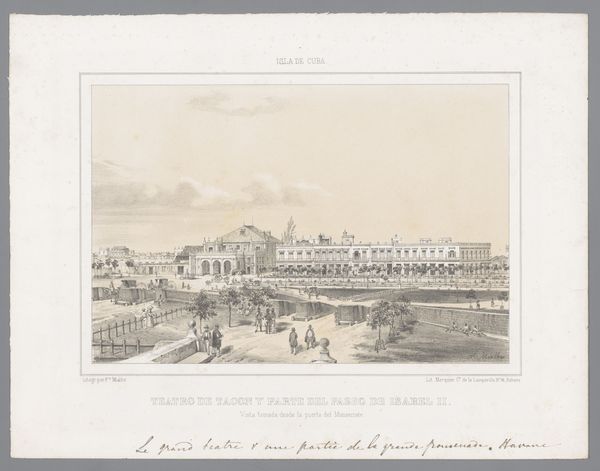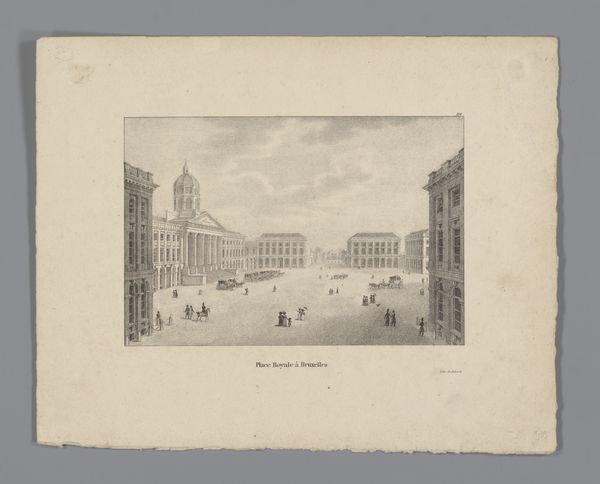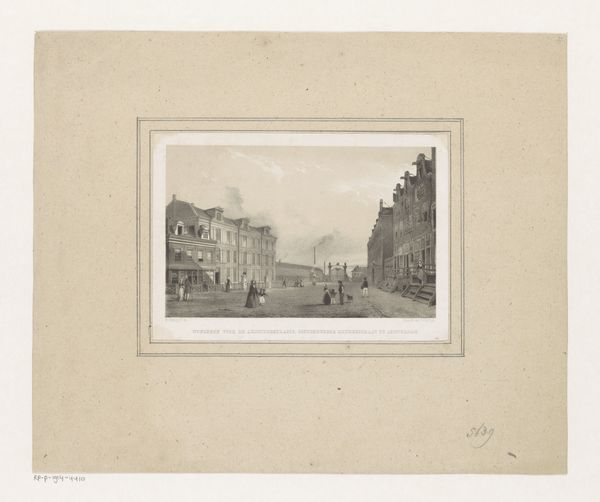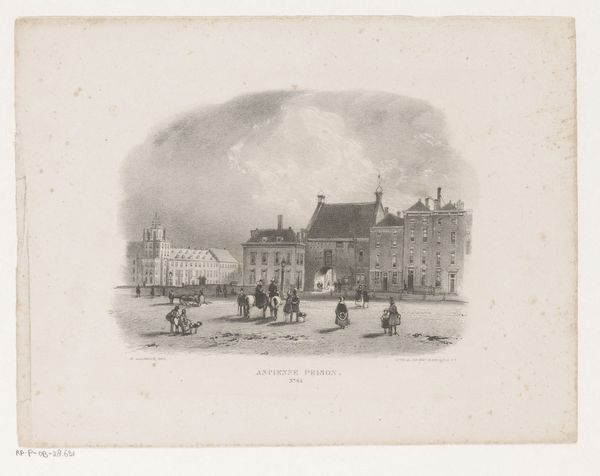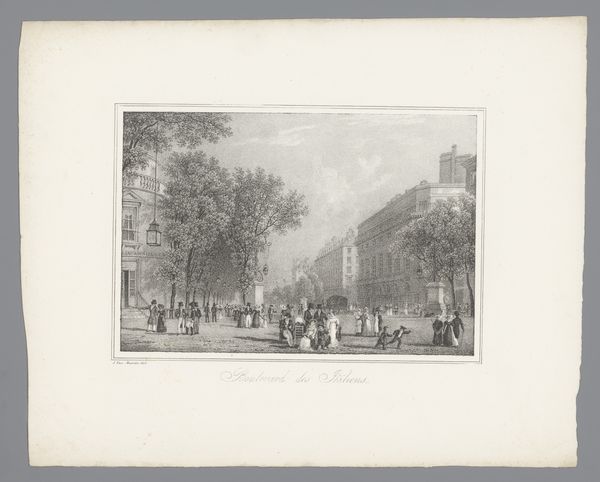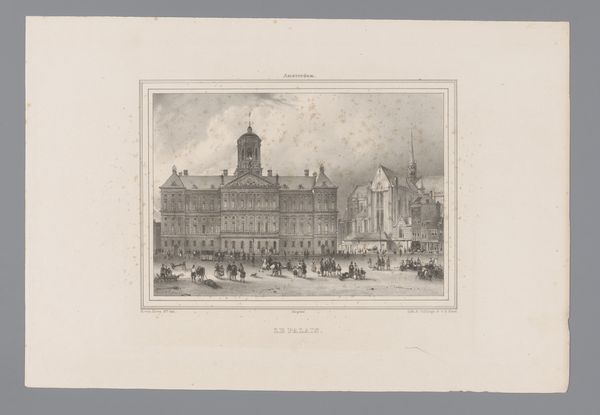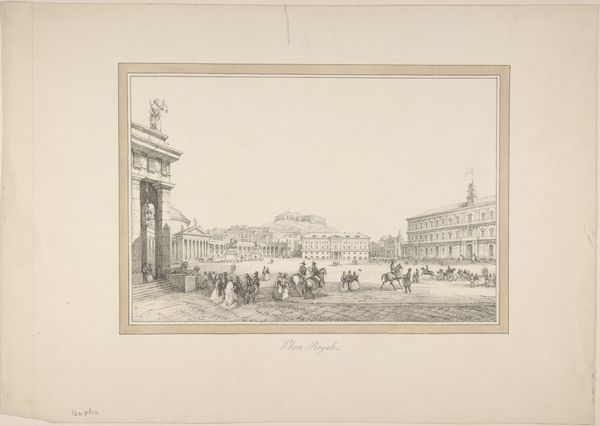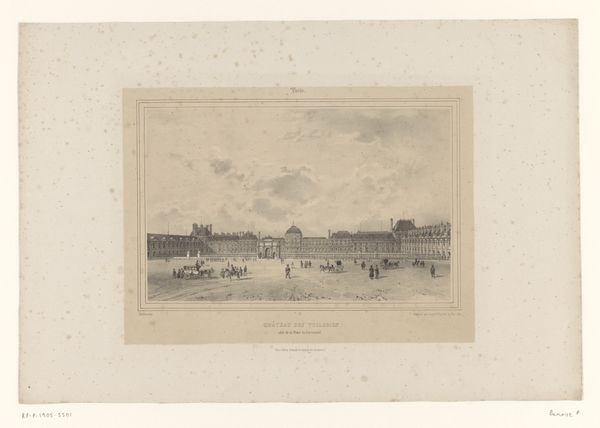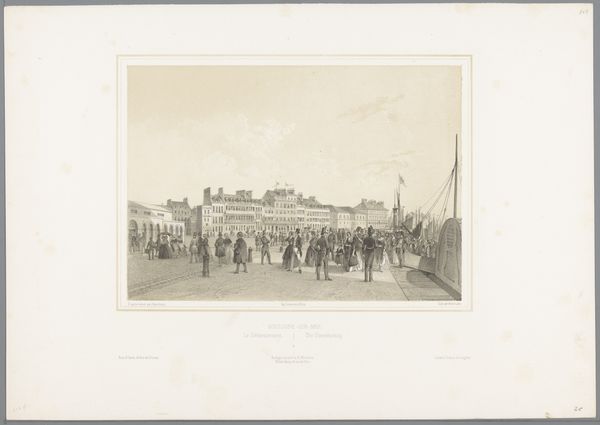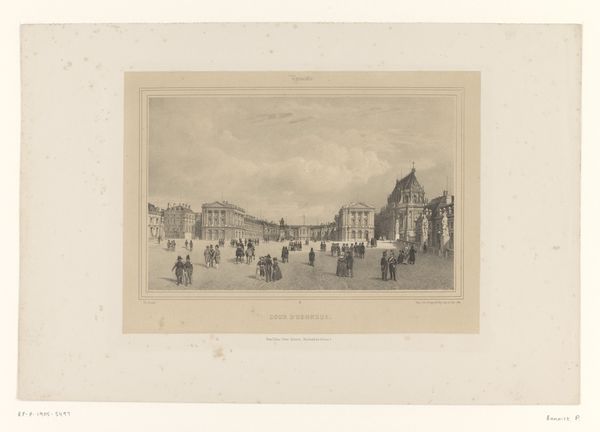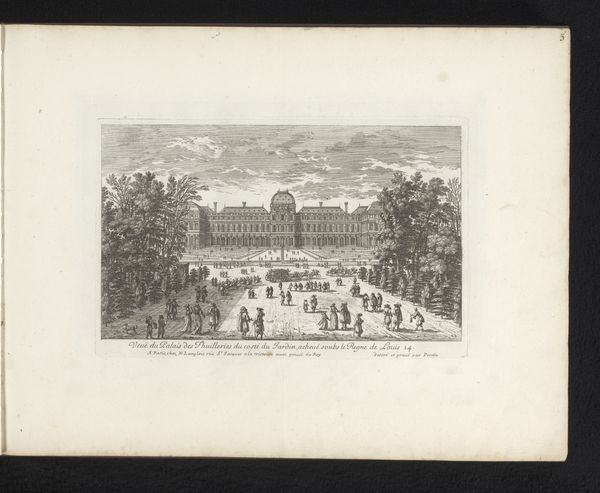
drawing, print
#
drawing
#
neoclacissism
# print
#
cityscape
#
history-painting
Dimensions: height 145 mm, width 238 mm
Copyright: Rijks Museum: Open Domain
Curator: What strikes me first is the rather bleak, almost clinical quality of the light here. Editor: Well, let’s contextualize that initial impression. This is "Gezicht op het Paleis van Versailles" – or "View of the Palace of Versailles" – attributed to Charles Fichot and dated before 1841. It’s a print or drawing currently held in the Rijksmuseum. Given the Neoclassical period, one could analyze this cold light from the point of view of power structures. Curator: A print, you say? It feels so precise. Note the lines: incredibly clean, meticulously rendered, emphasizing structure above all else. It’s less an atmospheric view and more an architectural record. Editor: Absolutely. This image acts as both a visual document and a political statement, showcasing the seat of French power and its impact on social identity. Consider, too, who would have had access to such images, reinforcing class distinctions. Curator: Indeed, but the composition leads your eye—almost cruelly, I might add—across the vast courtyard, devoid of warmth or true human connection, dwarfing the figures present. There's this echoing emptiness…it’s unsettling. Editor: The emptiness you feel reflects, in some ways, the hollowness beneath the veneer of absolute power, and raises critical questions about its human cost. Fichot's representation implicitly comments on the grand narratives of authority. It does make one consider ideas of national identity through manufactured perceptions. Curator: A compelling argument, though I'm also fixated on the visual dynamics. The symmetrical façade creates this repetitive visual rhythm. How much of it then alludes to French political thought? Editor: Quite possibly. Seeing Versailles presented this way is a crucial element in understanding the development of class and power throughout France’s history. Curator: Yes, but on a visual note, there's almost no tonal variation beyond gray, which, however, lends it a specific kind of dignity. A formal, stately dignity. Editor: Agreed. And viewing the history from different critical perspectives enhances one’s understanding of this artwork. Curator: A perfect synthesis of political interpretation and formalistic technique.
Comments
No comments
Be the first to comment and join the conversation on the ultimate creative platform.
